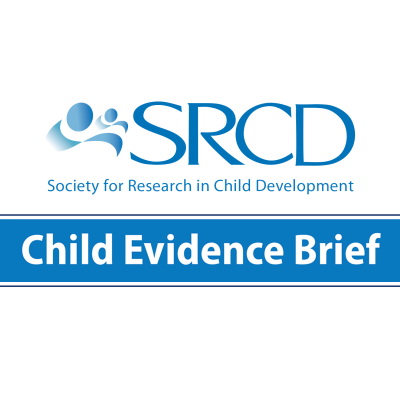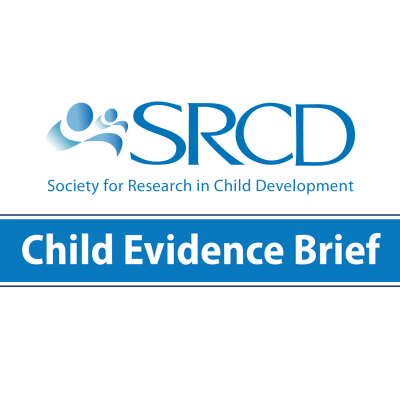Disparities in the Quality of Pediatric Dental Care: New Research and Recommended Changes
Social Policy Report Brief, Volume 31, Issue 4
Why Does this Matter?
- Tooth decay is the most prevalent chronic infectious disease for children, affecting over a quarter of U.S. children under age 5.
- Untreated dental pain and poor oral health have been associated with missed school and poor academic performance. Tooth decay can affect children’s cognitive skills, behavior, and engagement.
- Large disparities in children’s oral health are most pronounced between children from families of high and low socioeconomic status (SES), particularly when the children from low-SES families are also non-White.
Dental providers who treat children should be trained to work with children and their families. Training should include working with the full range of families in our increasingly diverse population.
Background
- Parents in immigrant, non-White, and non-English-speaking families report their children have worse dental care and oral health than parents of children who are Caucasian, U.S.-born, and in English-speaking families, respectively.
- Research on pediatric oral health disparities focuses on structural barriers (e.g., obstacles finding, getting to, and paying for a dentist), as well as attitudinal and knowledge challenges and behavioral contributors. Rarely considered is how well-equipped dentists are to work with young and diverse patients or how that contributes to the negative experiences of children and their caregivers.
- General dentistry lacks many requirements and restrictions of other pediatric specialties for working with children. General dentists can treat children upon graduation, but are not required to treat pediatric patients during training. Two thirds of U.S. dental schools report difficulty gaining access to pediatric patients for training, so their clinical training experience is primarily with adults. But 80% of children using Medicaid are treated by general dentists, and caring for children differs from caring for adults.
- Dentistry sedation and anesthesia licensing requirements differ by state, with disparate training and safety requirements across the country, including for those working with children.
What the Research Says
- Among low-income children, coverage by Medicaid and the Children’s Health Insurance Program (CHIP) has increased greatly, allowing greater access to dental care. However, fewer dentists (including pediatric dentists) accept Medicaid than private insurance.
- Despite increased health insurance coverage for low- income children, disparities in oral health continue.
- Across numerous studies, parents’ demographic characteristics are significantly related to children’s oral health and use of dental care, often more than their knowledge, attitudes, or behaviors. These differences include not just income but also parents’ literacy, education, and ethnicity, suggesting we should consider communication challenges. Yet few studies have examined communications patterns and interactions with children and caregivers during children’s dental visits.
- In a survey of over 1,000 diverse families, parents reported dentists did not always involve caregivers in their child’s care: 66% of parents said they were not allowed in the exam room with their child, 27% said no one explained what was happening to their child, 25% were not asked to help calm their child, and 8% were not asked permission before dentists administered medications. Such experiences were more common for lower-income families than more well-to-do families.
Implications for Policy and Practice
- Dental training should include pediatric courses and clinical experiences related to children’s development and behavior, and training in techniques for pediatric analgesia and sedation, working with families, and understanding cultural diversity. Needed steps include:
- Urge the Commission on Dental Accreditation to make mandatory both clinical experience working with children as well as coursework in cultural competence and training in working with diverse populations;
- Encourage pediatric dentists to accept public insurance;
- Provide more resources for pediatric dental fellowships and continuing education opportunities to ensure that more general dentists can effectively treat children; and
- Teach effective strategies for communicating with caregivers and children, reinforced throughout a dentist’s career.
- Regulations should change to hold family dentistry accountable to the same high standard as other pediatric professions in administering sedation and anesthesia to children. Emergency certifications should also change. Needed steps include:
- Review state regulations for administering sedation or anesthesia to children, which vary widely;
- Develop nationwide training standards for sedation of children; and
- Increase requirements for Pediatric Advanced Life Support certification for general dentists and the availability of emergency medical equipment to address sedation complications.
This brief summarizes a longer Social Policy Report, "Disparities in the Quality of Pediatric Dental Care: New Research and Recommended Changes," by Stephanie M. Reich, Associate Professor, School of Education, University of California (UC), Irvine; Kristin S. Hoeft, Assistant Professor, Department of Preventive and Restorative Dental Sciences, and Center to Address Disparities in Children’s Oral Health (CAN DO), UC, San Francisco; Guadalupe Díaz, postdoctoral fellow, School of Education, UC, Irvine; Wendy Ochoa, doctoral student, School of Education, UC, Irvine; and Amy Gaona, research staff, UC, Irvine.


